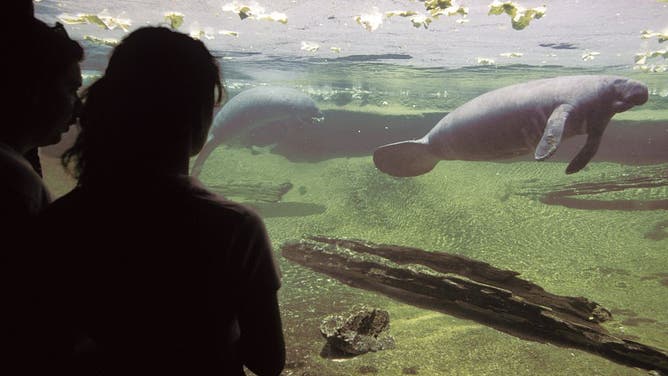Manatees may be recent arrivals to Florida, study suggests
It wasn’t until the 1950s that manatee populations in Tampa Bay were considered sizable. A recent state estimate put the population of manatees between 8,350 and 11,730, a figure that has been on the decline for the last several years.
Manatees prepare to leave winter habitats in Florida
Florida's giant sea cows are preparing to start their migration back into their usual spring and summer locations after cold winter months.
TAMPA, Fla. – Manatees, which are iconic fixtures of the Sunshine State, might not have always been permanent residents of the region, a new study has revealed.
The recently published study suggests that the giant sea cows may not have arrived in large numbers to the state of Florida until after European settlements started sprouting up in the 1500s.
"It is commonly assumed that Florida manatee populations were once larger than they are today," Thomas Pluckhahn, an anthropologist at the University of South Florida, said "Many will find the results surprising, not only because it contradicts this assumption but also because it indicates the complexity of changes that have taken place in the Anthropocene [period]."
Researchers based their theory off of observations, including a lack of bones found at archaeological sites when compared to other animals.
NO LETTUCE FOR YOU: FLORIDA DOESN’T PLAN ON PROVIDING SUPPLEMENTAL FEEDING FOR MANATEES
Out of nearly two million animal bones reported across 70 archaeological sites, there was a lack of evidence that the marine mammals existed in large numbers across the state.
"Based on my own experience and talking to other archaeologists, we agreed there was a rarity of manatee bones on archaeological sites," said Pluckhahn. "It was particularly impressive to me because I’ve worked at Crystal River, which is an epicenter for manatees. We became more curious and decided to do a comprehensive review of archaeological and archival sources."
The absence of manatee bones was further supported by explorers' accounts, which made no mention of the animals in Florida's waters.
In areas where Native Americans were thought to use manatee bones, researchers believe they may have acquired them through trade rather than from local hunting missions.

Florida, Tampa, Lowry Park Zoo, Visitors At Manatee Tank.
(Jeff Greenberg/Universal Images Group via Getty Images / Getty Images)
But why weren’t manatees commonly found around Florida?
According to experts, water temperatures were once too cold to support the warm-blooded creatures.
Manatees generally need water temperatures above 68 °F in order to thrive, but a period known as the Little Ace Age kept average water temperatures below the crucial threshold.
The cooler water temperatures are thought to have lasted into the 1800s, during some of the final years of the colonization of the Sunshine State.
Widespread public sightings of the species weren’t reported until the 1920s and 1930s and didn’t become a trend in the Tampa Bay-area until the 1950s.
FLORIDA MANATEES RESCUED AFTER BEING STRANDED ON LAND BY HURRICANE HELENE
A recent state estimate put the population of manatees between 8,350 and 11,730, a figure that has been on the decline for the last several years.
A federal review is underway to determine whether the species should be reclassified as endangered versus its current status of threatened.
The animals were removed from the endangered species list in 2017 after their population rebounded from the 1970s.
